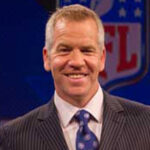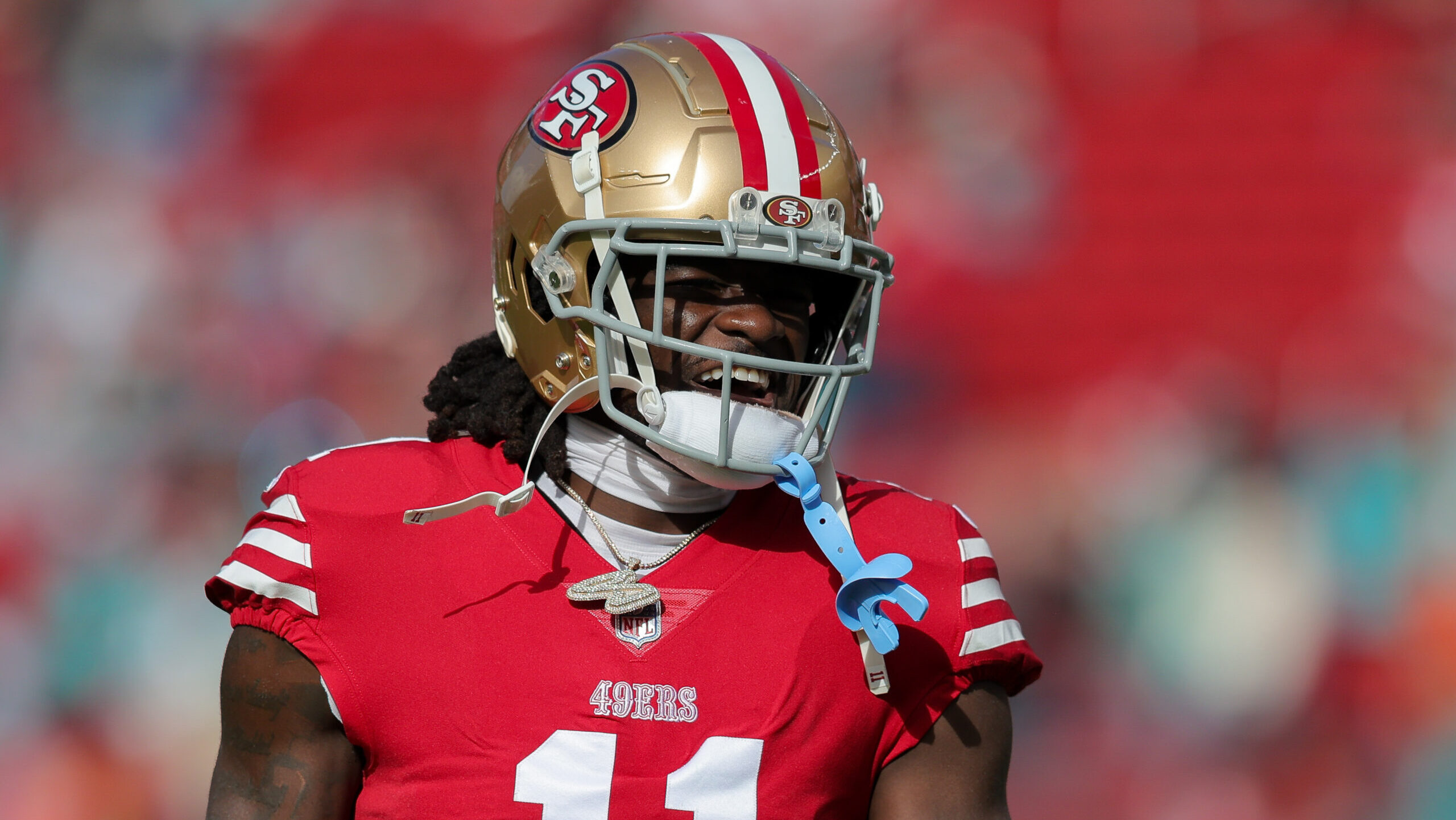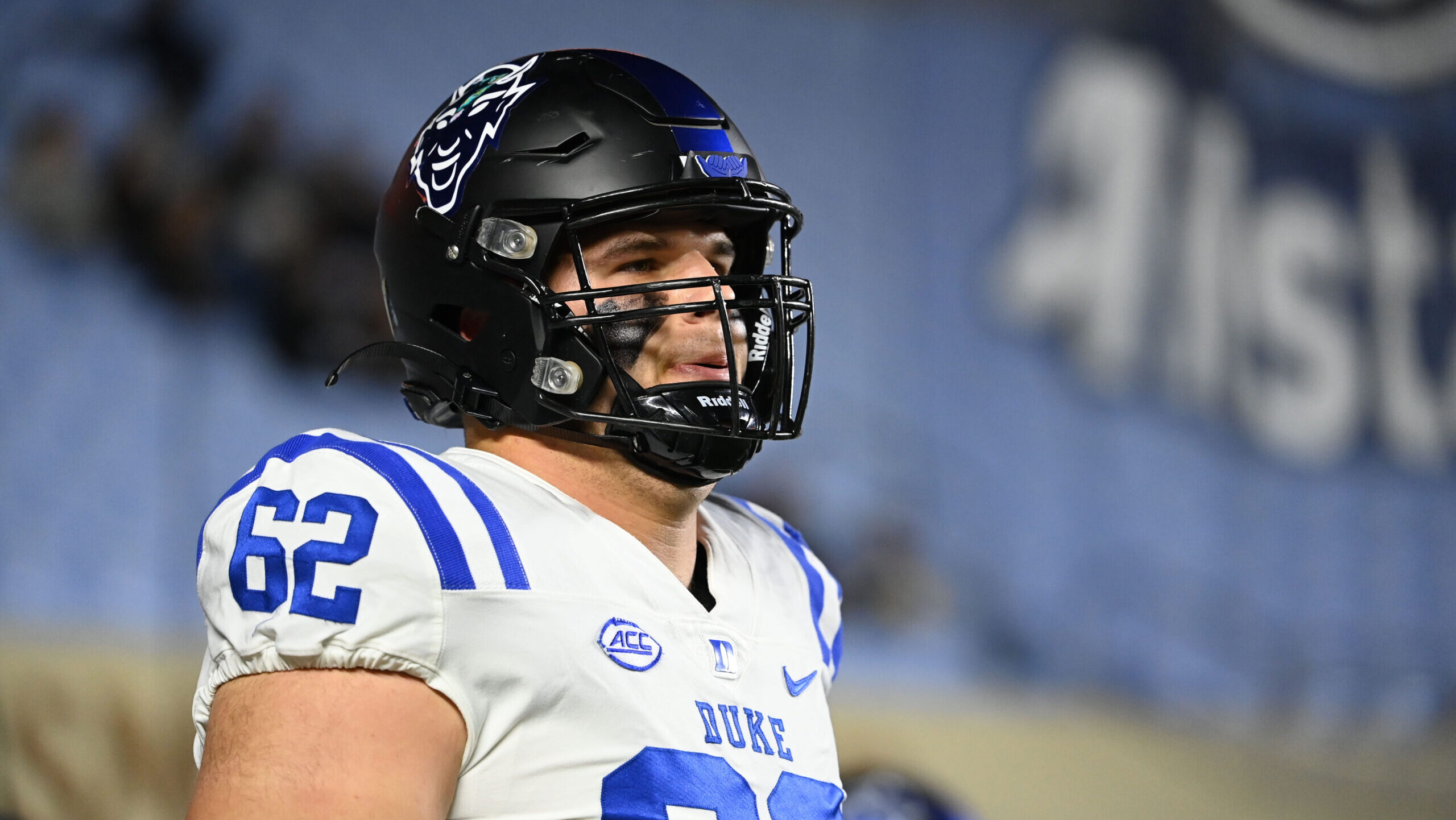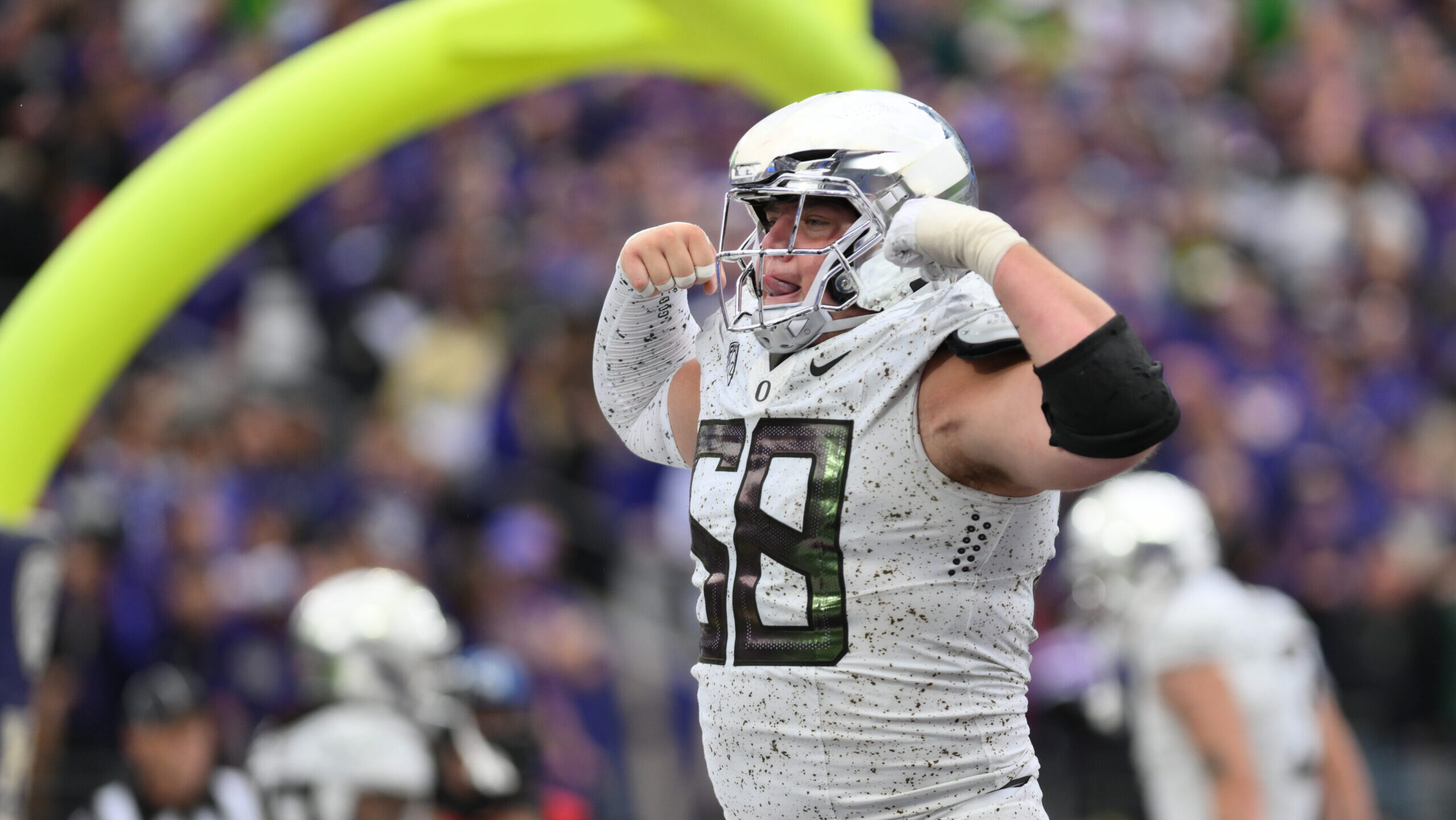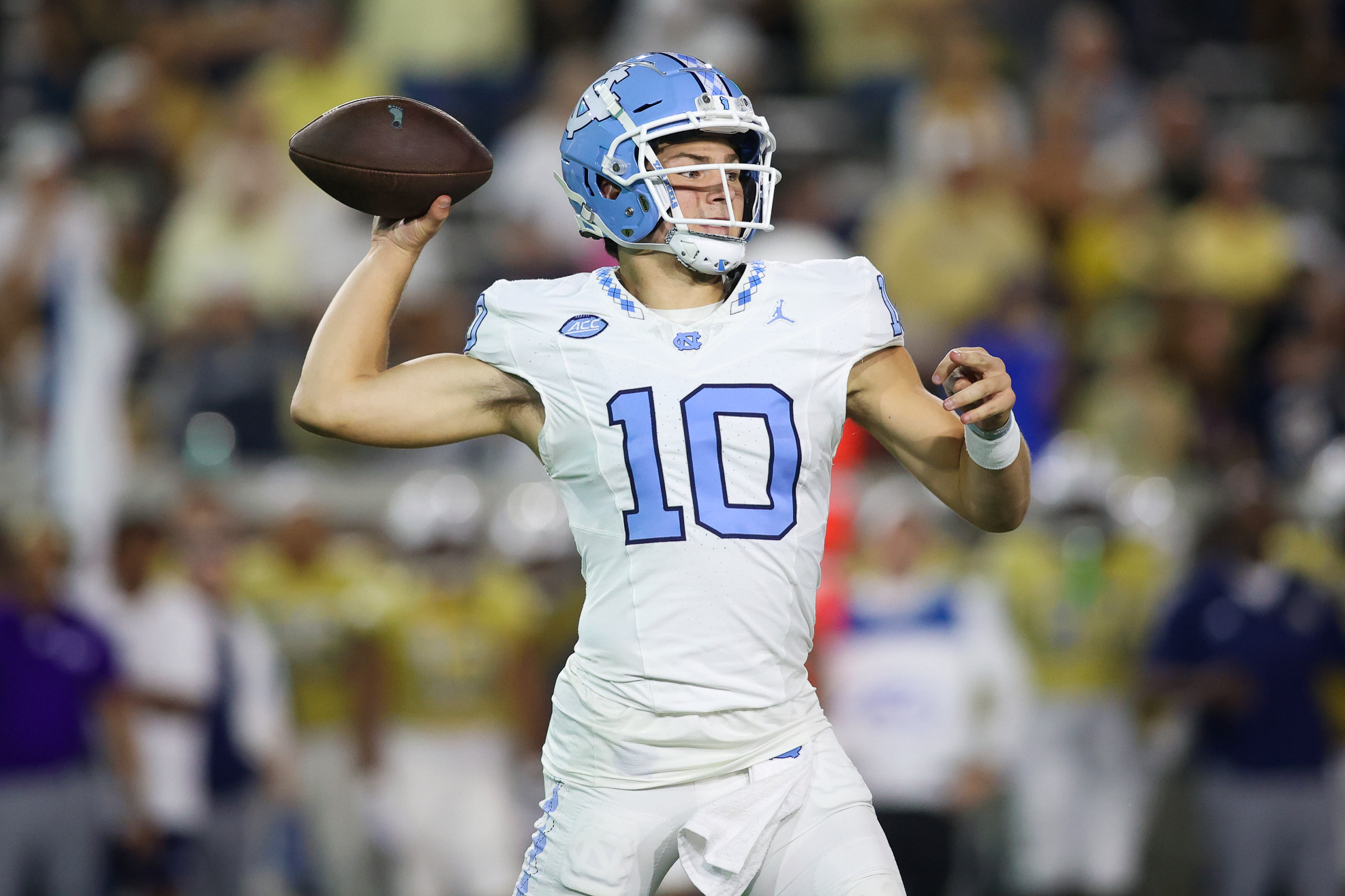Analysis
11/8/22
9 min read
Pre-Snap Read: How Lions' Defense Confused Packers' Aaron Rodgers
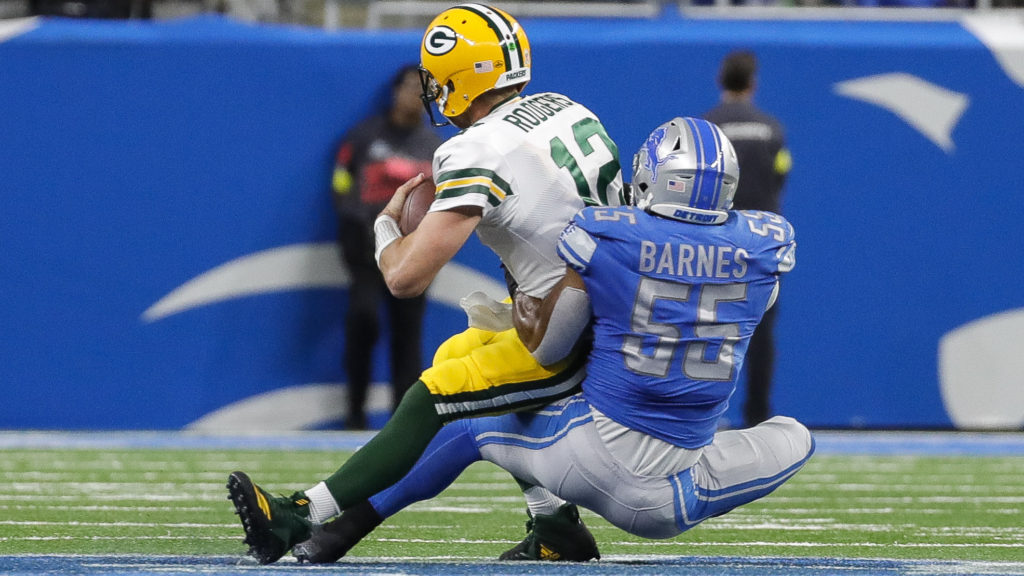
In the aftermath of any given Sunday, long after the live action is done and the highlight shows are over, there are scores and numbers that linger, that stand out, that make you raise your eyebrows and either say "wow!" or "what?"
One of those numbers is the Green Bay Packers losing for a fifth consecutive time in a game where they produced a minuscule nine points against the NFL's worst defense, while quarterback Aaron Rodgers threw three interceptions.
What?!?
As in, what did the Detroit Lions' defense do so well? And what did the Packers' offense do so poorly?
Where Packers Had Success
My first run-through of the game tape told me it wasn't the complete disaster the numbers would suggest. There was actually a decent amount of success.
In the first half, the Packers had 205 yards of total offense, converted 6-of-8 third downs, and Rodgers averaged more than 15 yards per completion. A little perspective: There isn't a team in the NFC averaging more than 400 yards of total offense per game, so their first-half yardage was excellent.
There also isn't a team in the NFC converting more than half of their third downs, so 75% is high-level work. Additionally, if Rodgers averaged 15 yards per completion for the season he would be first without a close second.
Yet, they had zero points to show for it, and in the end, scored only one touchdown against an awful defense. So, snippets of Green Bay offensive success aside, the Packers' failure, and the Lions' success, is the only story here that matters.
Evaluating Rodgers' Interceptions
Rodgers' three interceptions are a good place to start.
His first interception came after driving 88 yards on the first drive, which was more misfortune than misread. His quick pass over the middle ricocheted off a defender's helmet right after it came off his hand, shot high in the air and was picked off by rookie safety Kerby Joseph. Deflections of all kinds that happen at the line of scrimmage are the price of doing business in the passing game, and this one popped up at a bad time.
The next two were more than just unlucky. Were they due to what the Lions did well, or what the Packers did poorly?
The one near the goal line early in the second quarter, where Rodgers faked a run, rolled right and threw back to offensive tackle David Bakhtiari was equal parts terrific play by rookie defensive lineman Aidan Hutchinson and a poor throw from Rodgers.
First career pick for the first round pick❗️#GBvsDET | 📺 FOX pic.twitter.com/8lA5YloRIj
— Detroit Lions (@Lions) November 6, 2022
It was also an excellent design call that had Bakhtiari open. He was 5 yards clear of the defense, but the ball was underthrown. There are lots of layers around the play — fourth-and-goal and very much a non-traditional intended pass catcher — but the diagnosis is as traditional as it gets with an INT: receiver was open, the quarterback badly underthrew it and the nearest defender picked it off.
The third interception is the one that leaves the most to interpretation, making it the most fun to dissect.
Midway through the third quarter, right after his defense picked off Jared Goff, Rodgers was set up on the Lions' 23-yard line. Against a four-man rush and two deep safeties, he sees TE Robert Tonyan streaking down the right seam.
It's Joseph again❗️#GBvsDET | 📺 FOX pic.twitter.com/BYJfPDCbD6
— Detroit Lions (@Lions) November 6, 2022
At the moment he clears the linebackers and just before he reaches the safeties, Rodgers rips a fastball between the hashes, a pass he's delivered perfectly hundreds of times. But this time, Detroit rookie safety Kerby Joseph undercuts the route and snares the ball just before it settled into Tonyan's hands.
Three observations on what could be defined as the defining play of the game:
One, it's an excellent play by Joseph. Textbook. He read Rodgers perfectly, expertly came underneath Tonyan at just the right time and then finished by making the catch.
Two, Rodgers threw it slightly late, and it cost him. These connections between QB and pass-catcher that happen in the middle of the field and between the second and third level of defenses have little margin for error. The window of opportunity — with both space and timing — is incredibly narrow. It was just barely missed.
The third one is complex and open for interpretation, and it has to do with how Tonyan ran his route at the end of the play, and where Rodgers expected him to be.
On these "seam" routes run by slot receivers and tight ends, the offense is targeting a window 18-22 yards downfield — a specific piece of football real estate between the linebackers and safeties that's open for a split second. Once the receiver gets beyond the linebackers, he can head in one of two directions. He can stay wide and straight, remaining on a path toward the goalposts. Or, he can bend it further inside and break it off like an "in" route, if that area is more open than the deeper, middle part of the field. This is where QB and pass-catcher have to be on the proverbial "same page."
From the shots that Fox shared of Rodgers' reaction, both verbal and nonverbal, it looks like he wanted Tonyan to flatten out and break across the middle, as opposed to the more vertical route Tonyan chose. Had Tonyan flattened, it could have prevented Joseph from cutting underneath him to make the pick. Either way, the individual play made by Joseph was an excellent one.
What Detroit's Defense Did Well
This brings me to what Detroit's defense did schematically to hold Rodgers and the Packers to single digits, after allowing the most points in the league in September and October.
Their plan was based around a four-man rush and two deep safeties. That's what they majored in from start to finish. In between the quartet of down linemen and pair of safeties is where the variety came in. The other five defenders played different combinations of man and zone.
I saw a heavy dose of man coverage from the corners and underneath nickel and backers. I also noticed some coverages that looked to include man coverage on one side and zone on the other. The bottom line is they changed it up just enough to keep Rodgers guessing.
Their commitment to a four-man rush clearly said they were more interested in dropping extra players into coverage than blitzing the quarterback. Their decision to often leave not one but two deep safeties in zone coverage indicated they were concerned about the intermediate-to-deep portion of the field, and in essence wanted two "centerfielders."
When a defense calls for two safeties to play zone technique behind whatever type of coverage is being played underneath, you have a pair of players allowed to roam and react, which makes the intermediate to deep portion of the field difficult to access.
Had Detroit consistently rushed five or six, it would have come at the expense of having two safeties being allowed to police the back end. The call to employ more defenders to pass coverage than pass rush turned out to be the right one.
The volume of players dropping into coverage led to Rodgers appearing uncertain at the top of his drop, often not detecting an open place to deliver the ball. On a handful of plays where he was well-protected, he lacked conviction on where to release the pass. His eyes went down, his feet got choppy and the ball didn't come out on time.
Rodgers is one of the smartest quarterbacks in NFL history who's made a living off of knowing where the ball is supposed to go and delivering it on time and accurately. So, inducing a few moments where Rogers had time but nowhere to go is a heckuva compliment to the Lions' pass coverage.
My friend and colleague at NBC Sports, Peter King, captured the essence of a signature part of the weekend in this week's Football Morning In America article. He talked with Lions coach Dan Campbell after the game about Detroit's defensive gem. In sharing with Peter their plan to disguise coverages against Rodgers, Campbell said "I just knew that if we could keep him out of sync a little bit, that would certainly work well for us."
There were also examples of Green Bay's pass offense being out of sync that was more about their own missteps than Detroit's forcing them. Twice when Rodges went Sammy Watkins' direction in key moments — once on a second and goal in the first quarter, and then again on the final play of the game — Watkins broke in vs. man coverage, just as Rodgers released the ball to different areas of the field.
They aren't on the same page often enough judging by Rodgers' reactions and nonverbal presence throughout games.
As for Detroit's defense, the challenge they face in Chicago this Sunday is much different than the one they just conquered. Bears QB Justin Fields is improving as a passer while excelling as a runner. In his last four games, he's averaging double-digit carries and more than 100 yards on the ground.
That four-man rush with two safeties deep that got the best of Rodgers and company? It likely won't be the way to make Fields less than his best. But, they'll be coming in after a game where they gave a future Hall of Fame quarterback his most frustrating day of the season, and the confidence that comes with that is a good place to start.
